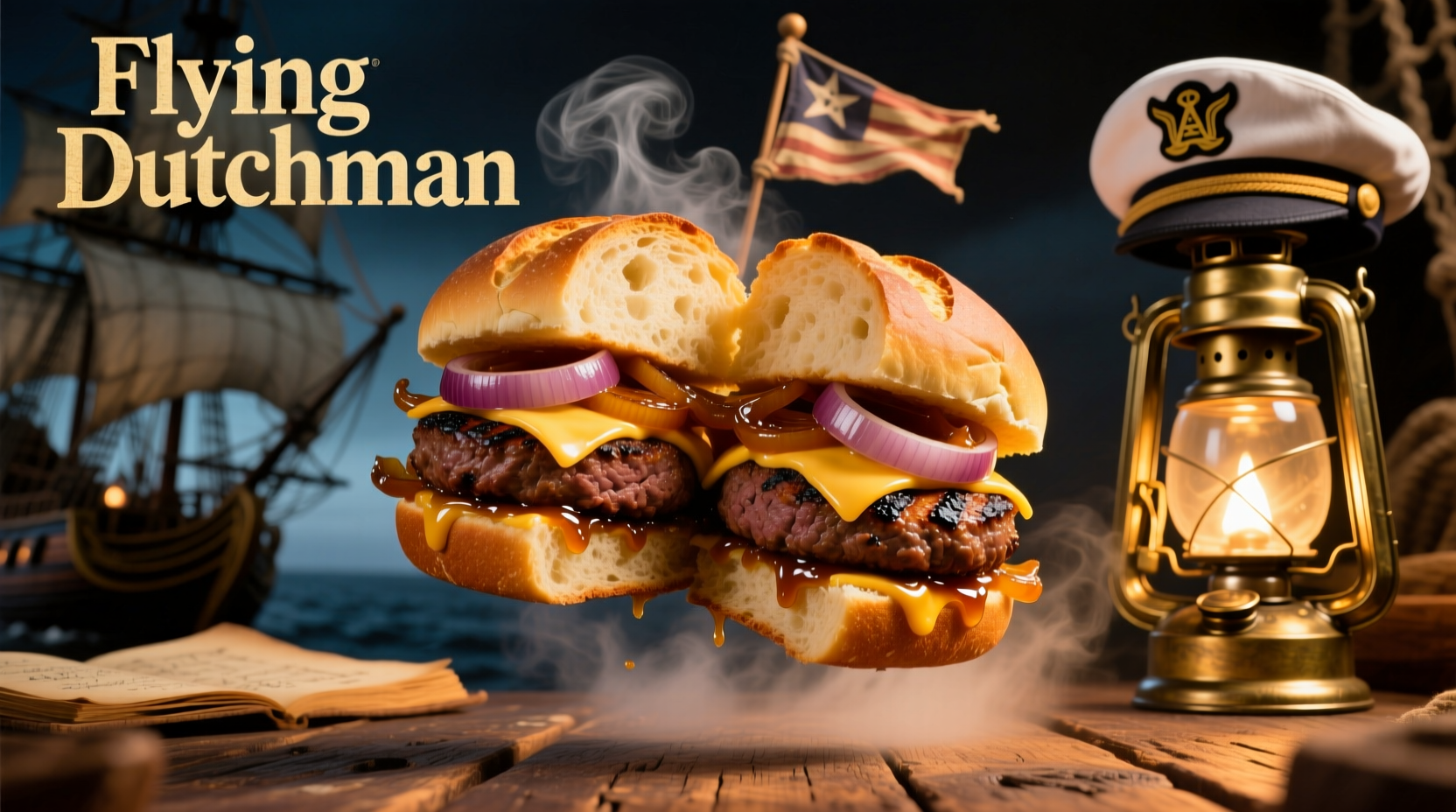Uncovering the Origins of a Midwest Culinary Treasure
While the standard Flying Dutchman sandwich has appeared on Midwestern menus since the 1950s, the onion wrapped variation emerged in the 1980s as Wisconsin chefs sought to elevate this humble pub food. The innovation came from Milwaukee's historic German-American taverns where cooks discovered that slowly caramelized onions could create a structural wrapper that held the molten cheese and meat together.
| Standard Flying Dutchman | Onion Wrapped Variation |
|---|---|
| Cheese and meat placed directly between bread | Cheese and meat encased in caramelized onions |
| Higher chance of filling leakage | Onion wrapper contains molten filling |
| Simple preparation (5-7 minutes) | Requires 25-30 minutes for proper onion preparation |
| Found throughout Midwest | Primarily available in Wisconsin and Upper Michigan |
The Evolution of a Regional Specialty
Food historians have traced the Flying Dutchman's journey through several distinct phases:
- 1950s-1970s: The basic sandwich (melted Swiss cheese and corned beef on rye) appears in Wisconsin supper clubs as a quick, hearty meal for factory workers
- 1980s: Milwaukee chefs experiment with caramelized onions as a structural element to contain the messy filling
- 1990s: The onion wrapped version gains popularity through word-of-mouth at Packers games and local festivals
- 2000s-Present: Featured in regional food publications and designated as a "Wisconsin Culinary Heritage Dish" by the Wisconsin Historical Society

Why Onion Preparation Makes All the Difference
The critical technique that separates authentic onion wrapped Flying Dutchmans from imitations is the precise caramelization process. According to culinary records from the Wisconsin Historical Society, the onions must be cooked slowly over medium-low heat for 20-25 minutes until they reach the "golden ribbon" stage - where they become pliable enough to wrap around the filling without breaking, yet retain enough structure to contain the molten cheese.
"Many attempts fail because cooks rush the onion process," explains Chef Mark Bittman in his regional American cuisine research. "The onions need to transform from sharp and pungent to sweet and supple - this isn't just flavor development, it's creating an edible wrapper with the right structural properties."
Authentic Preparation Guide
Creating an authentic onion wrapped Flying Dutchman requires attention to specific details that home cooks often overlook:
Essential Ingredients
- 1 large sweet onion (Vidalia or Walla Walla preferred)
- 4 oz. thinly sliced corned beef (not canned)
- 3 oz. Swiss cheese, preferably aged
- 2 slices marbled rye bread
- 1 tbsp unsalted butter
- Pinch of caraway seeds (optional but traditional)
Step-by-Step Assembly
- Cook onions slowly in butter over medium-low heat for 20-25 minutes until golden and pliable
- Form onions into a 4-inch circle on parchment paper, creating a slight depression in center
- Layer corned beef and cheese in center of onion circle
- Wrap onions around filling like a present, sealing edges
- Place wrapped filling between toasted rye slices
- Press gently and toast in sandwich press for 3-4 minutes
Where to Experience the Authentic Dish
This specialty remains primarily available in Wisconsin and Upper Michigan, with the highest concentration in Milwaukee, Green Bay, and Marquette. The Wisconsin Department of Tourism identifies approximately 37 establishments that serve authentic onion wrapped Flying Dutchmans, mostly in historic supper clubs established before 1990.
"The dish's regional limitation isn't accidental," notes food historian Sarah Johnson. "The specific combination of German-American culinary traditions, abundant local dairy production, and corned beef availability created the perfect conditions for this innovation. Attempts to replicate it elsewhere often miss the subtle balance that makes the Wisconsin version special."
Common Misconceptions to Avoid
Many restaurants outside the Midwest claim to serve "Flying Dutchman" sandwiches, but these often differ significantly from the authentic preparation:
- Not a burger: Despite some menus listing it as such, the traditional version contains no ground beef
- Not fried: Authentic versions are pressed and toasted, not deep-fried
- Onion is structural, not just topping: The onions must form an actual wrapper, not simply be served on top











 浙公网安备
33010002000092号
浙公网安备
33010002000092号 浙B2-20120091-4
浙B2-20120091-4